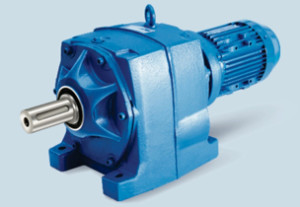Specific electric motors that provide high torque alongside maintaining low speed or low horsepower are termed as gear motors. Gear motors are commonly used in wide variety of commercial and household applications.
So you have geared motors in devices like garage door openers, electric alarm clocks, can openers or the time control buttons on your washing machine etc. In the commercial arena, they are utilized in hospital beds, cranes and commercial jacks. Irrespective of the kind, all gear motors operate in a similar manner. The gear motor types comprise the DC or direct current electric motor and the AC or alternating current motor with most of them having an output varying from 1200 to 3600 rpms.
The speed specifications of these motors include the stall-speed and the normal speed specifications. Gear motors majorly help in decreasing speed in a sequence of gears which results in generating more torque. This is achieved due to the attachment of the gearbox to the shaft and main motor rotor by means of the second reduction shaft. The second shaft connecting to a series of gears leads to the creation of what is known as a series of reduction gears. The longer the reduction gears train, the lesser will be the end output. The gear motors can contain several kinds of gearboxes varying from one another in construction and gear arrangement.
The gear motor working can be explained through the working of an electric alarm clock which has a seconds hand along with the hour and minute hand. The concurrent AC motor that goes into powering the time clock will ensure a spin of 1,500 rpm. But it is the series of reduction gears that are responsible for slowing the movement of the clock’s hands. This ensures that the final secondhand gear spins just a single revolution per minute and thus allowing the secondhand to complete one revolution per minute on the clock’s face.
Another example explaining the working of gear motors in commercial applications is the operation of cranes. Cranes help in moving and lifting heavy objects and the electric motor fitted on to these generate huge amounts of torque using minimal rotational output speed. The working principles of the gear motor in these are similar to the ones used in the electric alarm clock. The rotor’s output speed is decreased by the working of a series of big gears until the RPM and rotating speed of the final gear is reduced drastically. The extremely lowered RPM speed enables in generating huge amounts of force that is utilized for the lifting and movement of heavy objects.
However, there are some applications where the gear motors are not to be used, like applications requiring high shaft speed. This comprises of pumps, fans and engine starters. Other than these, the applications which use gear motors are wide ranging, comprising equipment and machines with which we interact on an everyday basis. From packaging equipment to servo mechanisms, juice dispenser to paint mixers, hospital beds and many more; the list is endless. Spur gears and helical gears are two commonly used gear kinds that go towards a number of these applications. Geared motor dealers, helical gear dealers, inline helical gear dealers and others are important players in this market.

